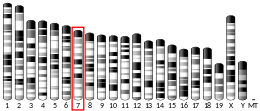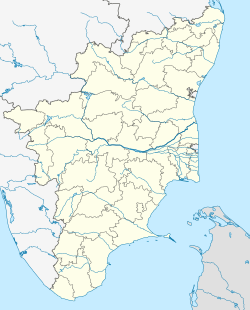40S 리보솜단백질 S16
40S ribosomal protein S16| RPS16 | |||||||||||||||||||||||||
|---|---|---|---|---|---|---|---|---|---|---|---|---|---|---|---|---|---|---|---|---|---|---|---|---|---|
| |||||||||||||||||||||||||
| 식별자 | |||||||||||||||||||||||||
| 에일리어스 | RPS16, S16, 리보솜단백질 S16 | ||||||||||||||||||||||||
| 외부 ID | OMIM: 603675 MGI: 98118 HomoloGene: 794 GeneCard: RPS16 | ||||||||||||||||||||||||
| |||||||||||||||||||||||||
| |||||||||||||||||||||||||
| |||||||||||||||||||||||||
| |||||||||||||||||||||||||
| 맞춤법 | |||||||||||||||||||||||||
| 종. | 인간 | 마우스 | |||||||||||||||||||||||
| 엔트레즈 | |||||||||||||||||||||||||
| 앙상블 | |||||||||||||||||||||||||
| 유니프로트 | |||||||||||||||||||||||||
| RefSeq(mRNA) | |||||||||||||||||||||||||
| RefSeq(단백질) | |||||||||||||||||||||||||
| 장소(UCSC) | Chr 19: 39.43 ~39.44 Mb | Chr 7: 28.05 ~28.05 Mb | |||||||||||||||||||||||
| PubMed 검색 | [3] | [4] | |||||||||||||||||||||||
| 위키데이터 | |||||||||||||||||||||||||
| |||||||||||||||||||||||||
40S 리보솜 단백질 S16'은 RPS16 [5][6][7]유전자에 의해 인체 내에서 암호화되는 단백질이다.
단백질 합성을 촉매하는 기관인 리보솜은 작은 40S 서브유닛과 큰 60S 서브유닛으로 구성됩니다.이 소단위들은 모두 4개의 RNA 종과 약 80개의 구조적으로 구별되는 단백질로 구성되어 있다.이 유전자는 40S 서브유닛의 구성요소인 리보솜 단백질을 암호화한다.그 단백질은 리보솜 단백질의 S9P 계열에 속합니다.그것은 세포질에 위치해 있다.리보솜 단백질을 코드하는 유전자의 전형과 같이,[7] 이 유전자의 여러 가공된 유사 유전자가 게놈을 통해 분산되어 있다.
상호 작용
리보솜 단백질 S16은 작은 리보솜 서브유닛으로부터의 단백질 중 하나이다.리보솜 단백질군에 속하며, 리보솜 단백질군은 배열 유사성에 따라 세 그룹으로 나뉜다.
* 유박테리아 S16.
* 녹조 및 식물 엽록체 S16.
* 시아넬 S16.
* 신경포라 미토콘드리아 S24(cyt-21)
S16 단백질은 약 100개의 아미노산 잔류물을 가지고 있다.Arabidopsis taliana에는 RPS16-1(염소 플라스틱)과 RPS16-2(엽록체와 미토콘드리아를 대상으로 함)의 두 가지 평행체가 있다.
[4].
RPS16은 CDC5L과 [8]상호 작용하는 것으로 나타났습니다.
레퍼런스
- ^ a b c GRCh38: 앙상블 릴리즈 89: ENSG00000105193 - 앙상블, 2017년 5월
- ^ a b c GRCm38: 앙상블 릴리즈 89: ENSMUSG000037563 - 앙상블, 2017년 5월
- ^ "Human PubMed Reference:". National Center for Biotechnology Information, U.S. National Library of Medicine.
- ^ "Mouse PubMed Reference:". National Center for Biotechnology Information, U.S. National Library of Medicine.
- ^ Batra SK, Metzgar RS, Hollingsworth MA (May 1991). "Molecular cloning and sequence analysis of the human ribosomal protein S16". J Biol Chem. 266 (11): 6830–3. doi:10.1016/S0021-9258(20)89575-1. PMID 2016298.
- ^ Kenmochi N, Kawaguchi T, Rozen S, Davis E, Goodman N, Hudson TJ, Tanaka T, Page DC (August 1998). "A map of 75 human ribosomal protein genes". Genome Res. 8 (5): 509–23. doi:10.1101/gr.8.5.509. PMID 9582194.
- ^ a b "Entrez Gene: RPS16 ribosomal protein S16".
- ^ Ajuh, P; Kuster B; Panov K; Zomerdijk J C; Mann M; Lamond A I (December 2000). "Functional analysis of the human CDC5L complex and identification of its components by mass spectrometry". EMBO J. ENGLAND. 19 (23): 6569–81. doi:10.1093/emboj/19.23.6569. ISSN 0261-4189. PMC 305846. PMID 11101529.
추가 정보
- Wool IG, Chan YL, Glück A (1996). "Structure and evolution of mammalian ribosomal proteins". Biochem. Cell Biol. 73 (11–12): 933–47. doi:10.1139/o95-101. PMID 8722009.
- Kato S, Sekine S, Oh SW, et al. (1995). "Construction of a human full-length cDNA bank". Gene. 150 (2): 243–50. doi:10.1016/0378-1119(94)90433-2. PMID 7821789.
- Vladimirov SN, Ivanov AV, Karpova GG, et al. (1996). "Characterization of the human small-ribosomal-subunit proteins by N-terminal and internal sequencing, and mass spectrometry". Eur. J. Biochem. 239 (1): 144–9. doi:10.1111/j.1432-1033.1996.0144u.x. PMID 8706699.
- Bonaldo MF, Lennon G, Soares MB (1997). "Normalization and subtraction: two approaches to facilitate gene discovery". Genome Res. 6 (9): 791–806. doi:10.1101/gr.6.9.791. PMID 8889548.
- Lei XH, Shen X, Xu XQ, Bernstein HS (2001). "Human Cdc5, a regulator of mitotic entry, can act as a site-specific DNA binding protein". J. Cell Sci. 113 Pt 24: 4523–31. PMID 11082045.
- Ajuh P, Kuster B, Panov K, et al. (2001). "Functional analysis of the human CDC5L complex and identification of its components by mass spectrometry". EMBO J. 19 (23): 6569–81. doi:10.1093/emboj/19.23.6569. PMC 305846. PMID 11101529.
- Andersen JS, Lyon CE, Fox AH, et al. (2002). "Directed proteomic analysis of the human nucleolus". Curr. Biol. 12 (1): 1–11. doi:10.1016/S0960-9822(01)00650-9. PMID 11790298. S2CID 14132033.
- Yoshihama M, Uechi T, Asakawa S, et al. (2002). "The human ribosomal protein genes: sequencing and comparative analysis of 73 genes". Genome Res. 12 (3): 379–90. doi:10.1101/gr.214202. PMC 155282. PMID 11875025.
- Karan D, Kelly DL, Rizzino A, et al. (2002). "Expression profile of differentially-regulated genes during progression of androgen-independent growth in human prostate cancer cells". Carcinogenesis. 23 (6): 967–75. doi:10.1093/carcin/23.6.967. PMID 12082018.
- Strausberg RL, Feingold EA, Grouse LH, et al. (2003). "Generation and initial analysis of more than 15,000 full-length human and mouse cDNA sequences". Proc. Natl. Acad. Sci. U.S.A. 99 (26): 16899–903. Bibcode:2002PNAS...9916899M. doi:10.1073/pnas.242603899. PMC 139241. PMID 12477932.
- Ota T, Suzuki Y, Nishikawa T, et al. (2004). "Complete sequencing and characterization of 21,243 full-length human cDNAs". Nat. Genet. 36 (1): 40–5. doi:10.1038/ng1285. PMID 14702039.
- Bouwmeester T, Bauch A, Ruffner H, et al. (2004). "A physical and functional map of the human TNF-alpha/NF-kappa B signal transduction pathway". Nat. Cell Biol. 6 (2): 97–105. doi:10.1038/ncb1086. PMID 14743216. S2CID 11683986.
- Gerhard DS, Wagner L, Feingold EA, et al. (2004). "The status, quality, and expansion of the NIH full-length cDNA project: the Mammalian Gene Collection (MGC)". Genome Res. 14 (10B): 2121–7. doi:10.1101/gr.2596504. PMC 528928. PMID 15489334.
- Andersen JS, Lam YW, Leung AK, et al. (2005). "Nucleolar proteome dynamics". Nature. 433 (7021): 77–83. Bibcode:2005Natur.433...77A. doi:10.1038/nature03207. PMID 15635413. S2CID 4344740.
- Yu Y, Ji H, Doudna JA, Leary JA (2005). "Mass spectrometric analysis of the human 40S ribosomal subunit: native and HCV IRES-bound complexes". Protein Sci. 14 (6): 1438–46. doi:10.1110/ps.041293005. PMC 2253395. PMID 15883184.
- Tu LC, Yan X, Hood L, Lin B (2007). "Proteomics analysis of the interactome of N-myc downstream regulated gene 1 and its interactions with the androgen response program in prostate cancer cells". Mol. Cell. Proteomics. 6 (4): 575–88. doi:10.1074/mcp.M600249-MCP200. PMID 17220478.
- Ewing RM, Chu P, Elisma F, et al. (2007). "Large-scale mapping of human protein-protein interactions by mass spectrometry". Mol. Syst. Biol. 3 (1): 89. doi:10.1038/msb4100134. PMC 1847948. PMID 17353931.







